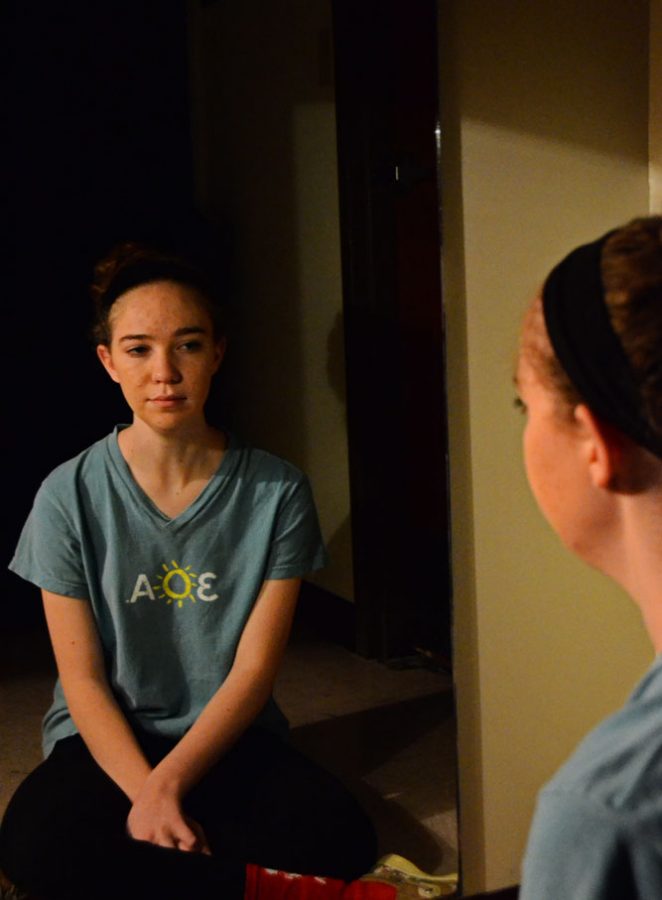
A new species is emerging among us today, a race of seemingly ideal females who are invading the pixels of our televisions and computer screens while silently shredding the fragile self-esteem of millions young girls. They stand at 5’9” or 5’10, weigh in between a mere 100 or 110 pounds and possess breasts which resemble gargantuan cantaloupes more so than normal body parts. Their bodies curve in the shape of a polished crystal hourglass and their porcelain faces frame voluptuous red lips and doll-like eyes.
The problem with these newfound medical mysteries, so very perfect in every way imaginable, is that they are not, in fact, real. Each day, girls are bombarded by the media with images of airbrushed, digitally enhanced models whose measurements are everything but average. They are exposed to ideas as to what makes one ‘beautiful’, and the strict qualifications which accompany this title. This heightened bar of aesthetic expectation has lead to the dissatisfaction of many individuals with their own bodies and pummeled their sense of worth and confidence into a contorted sense of insecurity.
One of the most prominent ways that these degrading messages are dispersed is through television, internet and magazine advertisements. We know the scenario all too well: it begins with innocent internet browsing, when out of nowhere appears the graphic of a scantily clad woman, her hips and stomach undergoing time-lapsed shrinkage, with a caption claiming to help you ‘lose inches in hours!’ One click and your page is redirected to a screen full of half naked double zeros and paragraphs about an ‘herbal weight loss pill’ which is mysteriously ‘not yet’ FDA approved.
With the average exposure of a U.S. resident to 5,000 advertisements a day, according to a 2003 study by Alfreiter, Elzinga & Gordon, it comes as no surprise that the Dove Campaign for Real beauty reported in 2004 that only 2 percent of women describe themselves as being beautiful.
Young girls are no exception to this commercialized body dissatisfaction.
A Kaiser Foundation study by Nancy Signorielli found that 37% of articles in leading teen girls’ magazines focus on appearance, while 56% of commercials which run during television programs directed at teen girls used beauty as a product appeal. Thus, providing a feasible explanation for why so many young girls claim to be dissatisfied with their bodies. This dissatisfaction, so often fueled by the media, accounts for the prevalence of eating disorders which occur in in teenage girls.
Furthermore, children much younger than this are affected by the media’s vicious approach towards the expectations of female appearance. Nhi.gov reports that 40 percent of 9- and 10-year-old girls say they have tried to loose weight, and 81 percent of 10-year old-girls admit that they are afraid of becoming ‘fat’. This is likely associated with the media’s influence on these girls throughout childhood and into the blossoming pre-pubescent years.
In an alarming 2007 study conducted by Dr. Helga Dittmar, girls ages 5 to 7 reported less body esteem and an increased desire for a slimmer body after exposure to images of Barbie™ dolls, compared to girls who saw images of dolls with a healthy body size or no dolls at all. These first graders should be worrying about whether or not they are allowed to have an extra scoop of ice cream, not about the calories which accompany the tasty frozen treat. Nonetheless, the media continues to negatively impact the body image of young and adolescent females on a daily basis.
In today’s new age of technological innovation, it has been made possible to digitally alter a photograph to astounding degrees. Models can be made slimmer, taller and bustier with the mere click of a button or the swipe of a computer mouse. Furthermore, even before digital enhancement, female models are far from ordinary when it comes to their size. According to pbs.org, The average American woman is 5’4″ tall and weighs 140 pounds; however, the average American model is 5’11″ tall and weighs 117 pounds.
Modeling companies adhere strictly to the body qualifications presented by the media, and have astoundingly rigid rules regarding size. In 2009, Ralph Lauren model Flippa Hamilton was fired by the clothing company, who attributed the incident to “her inability to meet the obligations under her contract with us.” Hamilton said the company told her she was overweight. Flippa Hamilton is 5’10” and weighs only 120 pounds. It is outrageous occurrences like these which exhibit the detrimental and unrealistic bodily expectation placed upon women by the media.
It is up to the female population to counter the horrific messages being produced by the media. It is up to the 5’4”, the 140 pounds, the breasts void of silicone and the bodies free of Photoshop slimming. It is necessary that women, young and old, step forth and speak out against the self-esteem bashing executed by the media. That we remind one another that beauty is more than the size on your jeans or your measurements compared to those of Megan Fox. We must learn to believe that real girls are not perfect and that perfect girls are not real.
By Anna Wright






















































































